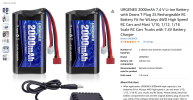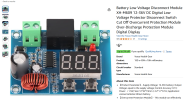Hi folks. I've been a member for a few years, and got both inspiration and entertainment from lots of the site - but this is the first time I've posted. After a year when every time I cleaned the track and ran a few trains, we then had filthy weather which meant it all had to be done again, I basically got fed up and had very few operating days. I figure that moving to battery power might remove the need for squeaky clean track.
I run a simple out and back line with a Thomas and friends theme. When the grandchildren get older, I'll at least replace the faces with realistic smoke box doors.
I'm thinking that I'll start with Emily, whose large tender should accommodate the necessary "works". Just a few questions:
Have you any recommendations for sourcing equipment, receivers, transmitters etc? Preferred makes? Stuff to avoid?
Has anybody got any specific advice on converting an Emily?
How do you decide what voltage you need to put inside a particular loco?
And I'm sure in the light of your collective wisdom, there'll be lots of other advice you might like to throw in.
Thanks
I run a simple out and back line with a Thomas and friends theme. When the grandchildren get older, I'll at least replace the faces with realistic smoke box doors.
I'm thinking that I'll start with Emily, whose large tender should accommodate the necessary "works". Just a few questions:
Have you any recommendations for sourcing equipment, receivers, transmitters etc? Preferred makes? Stuff to avoid?
Has anybody got any specific advice on converting an Emily?
How do you decide what voltage you need to put inside a particular loco?
And I'm sure in the light of your collective wisdom, there'll be lots of other advice you might like to throw in.
Thanks



